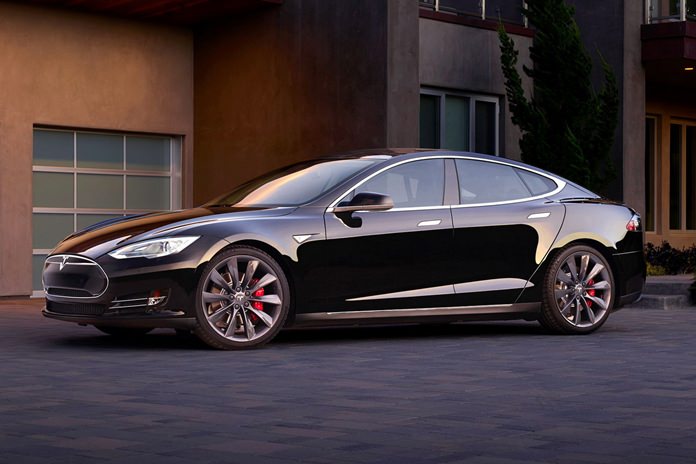
Bill Sherwood in Australia is an ex-race driver and an original thinker. He has just had an extended road test of a Tesla P90D. Bill’s opinion I am prepared to listen to, and I think you should too.
“First thing I noticed was the most obvious – No noise at all and no vibration, just totally smooth and quiet. The interior finish was superb and comfortable with leather seats, etc. In the middle there’s a huge 17″ LCD touch-screen where you can access everything that can be configured in the car. For the drive today the sales rep had the top 2/3’s as a map and the bottom showing the reversing camera all the time, which turned out to be a good thing as the view from the inside mirror is not very good.
“The instrument panel is usually quite dark with only the relevant information displayed. The camera that looks ahead to determine the lanes also looks up to read the speed limit signs, and so when you drive along that limit is displayed as a little road-side sign icon to the left of the speed readout. If you go over the limit then the icon gets a bit larger. As objects (other cars, fences, etc.) get close to the car a small fan of light that varies in color and size appears out of that part of the car. Handy for parking, etc.
“One odd thing that happens when driving is the regenerative braking. When the regen braking is working the brake lights automatically come on as well. Out of habit I left my foot on the brake when stopped at the traffic lights but there’s no need to as it’ll hold its position perfectly still without you having to touch anything. As soon as you touch the throttle away it goes, smooth as silk. The feedback/feel of the steering is also adjustable. ‘Sport’ felt pretty natural to me.
“One lever behind the steering wheel on the left is for the cruise control and autopilot functions. One tug on the lever gives adaptive cruise control – The car will hold its speed but if there’s another car (or I assume wall, etc.) that’s going slower and so getting closer it’ll slow down to the same speed, then speed up again to either the pre-set speed or the local speed limit, whichever is lower. It’ll go right down to a complete stop and then accelerate away again, so a good thing in heavy traffic.
“Two tugs gives you the autopilot function and it worked rather well in the heavy traffic on the Brisbane roads. By law here you have to have at least a light grip on the steering wheel at all times so I did, but with zero input to it … and it really did sit quite nicely in the middle of the meandering lane with traffic all around.
“Okay the good bit – power! Normal driving with a light touch on the throttle has it behaving just like a very smooth car. A bit more of a squeeze and there’s a *very* strong hint of a lot more power to come. A little as quarter-to-half throttle brings more acceleration than you’d ever need on the road. It really shoves you in the back very firmly indeed. The way it does it is quite unlike an ICE-engined car. No matter what conventional car you might drive, it simply will not have the instantaneous response of the Tesla. Give a normal car a prod on the throttle and for sure it’ll accelerate but it might have to go down a gear or two in the automatic gearbox to get the revs up – same with a manual gearbox – but the Tesla just *goes* instantly from any speed. No waiting, no hesitation, just instant power and lots of it.
“With the restrictions of driving around city roads in the middle of Brisbane I wasn’t going to try an Insane Mode launch off the line, but I did give it full throttle in that mode for maybe two seconds on a clear bit of straight road. I knew it’d be fast, but not *that* fast! Full throttle brings scorching acceleration. And don’t forget that the P100D is faster again. And then there’s another mode or two available to make the car faster yet again.
“The P90D had about 550 km or so range I think, so enough to do plenty of around-town trips before needing a drink or part of an inter-state run, then an hour or so at a recharge station. True, that’s a bit inconvenient but the beauty of the electric car is that when better battery technology comes along you can just swap over to the newer and better ones quite easily.
“Another very significant thing I asked about was the servicing schedule. Turns out that they only need a very minor service ‘once a year, but it’s not a problem if you leave it two years and doesn’t void the warranty’. A major service appears to be where they change the brake fluid. 🙂
“I could certainly be interested in a Model 3 in a year or two. They really are that good.”




